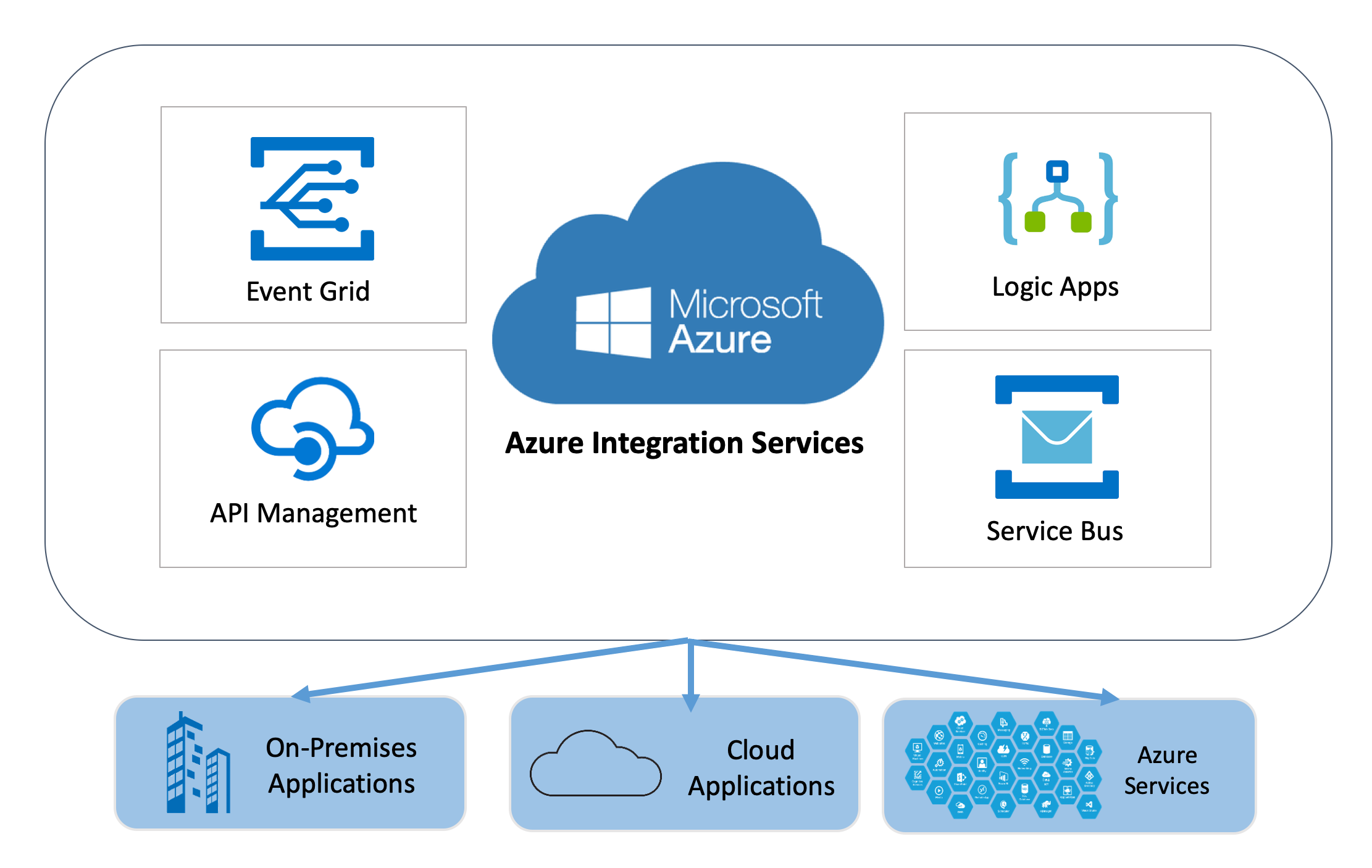Azure Integration Services
Each organisation is using multiple software applications in their daily routine, which means “No Application is an island”. To get the most out a software application, it needs to be connected to other software applications.
Azure offers one of the best integration solutions to its customers in the form of Azure Integration Services iPaaS solution. It is a set of cloud services for mission-critical enterprise integration. These cloud services, sometimes combined with other cloud technologies, can be used to integrate both cloud and on-premise applications.

Following are the major components of Azure API Management:
The four main components of Azure Integration Services are:
- Logic Apps – supporting orchestration of business processes, workflows and more with actions, triggers, workflows, and flow controls
- Service Bus – providing reliable enterprise messaging
- API Management – provides an API service
- Event Grid – allows raising and delivering events
Common Scenarios where we advise to our customer for use Azure Integration Services:
- Connecting applications within the organisation – The applications might run in the on-premises datacentre(s), in the cloud, or a mix of both. This kind of enterprise application integration (EAI) has been important for decades; it’s now being adapted for a hybrid world.
- Connecting applications in the organisation with those of a business partner – Commonly known as business-to-business (B2B) integration, this often relies on standard formats such as Electronic Data Interchange (EDI).
- Connecting applications inside the organisation to Software as a Service (SaaS) applications – As the business applications continue to shift to SaaS, application integration requires connecting with these cloud services. This type of integration is mostly through REST and SOAP interfaces.
- API Integration – Application Programming Integration (API) is a relatively new way of connecting with external developers, partners, and connectors as well. APIs enable easy to consume interfaces. An API developer portal as an API documentation and onboarding platform is nice to have along with APIs for easy consumption. API integration enables security, monetisation and analytics on top of core API access.
- Process Integration – Process Integration is used to implement orchestration like processes that span multiple departments and systems in an organisation. Process integration is about sharing of events, transactions and data between business systems, typically in real-time; e.g. Order to Cash, Procure to Pay, Onboarding processes.
- Decoupled Integration – In a complex integration scenario where systems’ high availability cannot be guaranteed or there are differences between the rate of messages publishing and being consumed by other systems, a decoupled integration can offer a solution. Architecting a decoupled integration boils down to the Message Queue concepts. You are passing messages of data from one application to a queue, where they are picked up by another application for processing. This is the Service Bus Messaging approach supported by Azure Service Bus.
- Integrating applications with the Internet of Things (IoT) devices – The ever increasing popularity of IoT raises a variety of new integration challenges. A cloud-based solution — an iPaaS —is uniquely suited to address these, as it can be accessed by devices running anywhere.
- EDI – Azure Integration Services provide support for industry standard protocols like AS2, X12, EDIFACT, etc, as well as the capability to process JSON, XML messages and flat files.
- Microservices – Azure Integration Services provides the ability to expose and consume microservices.





